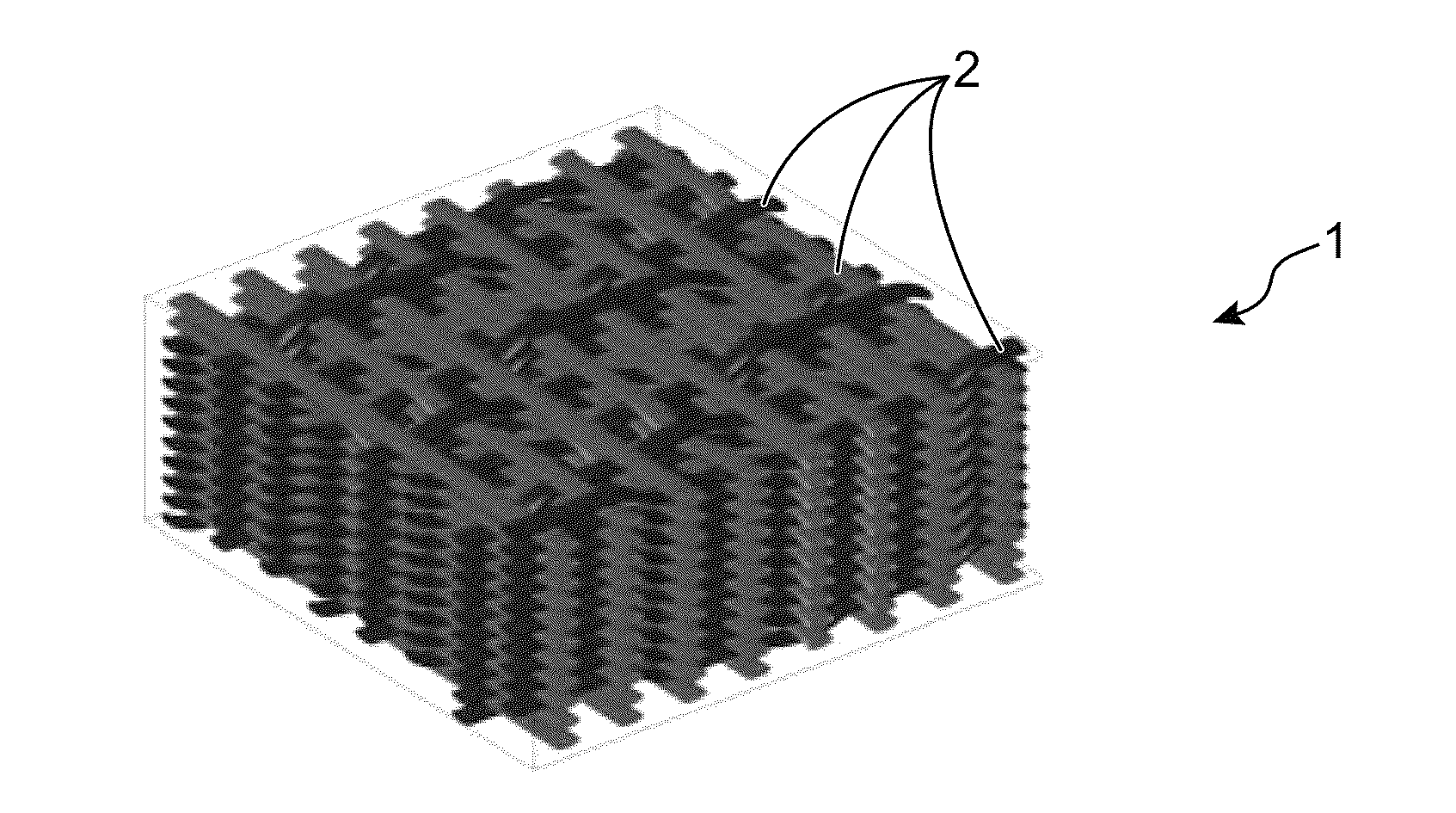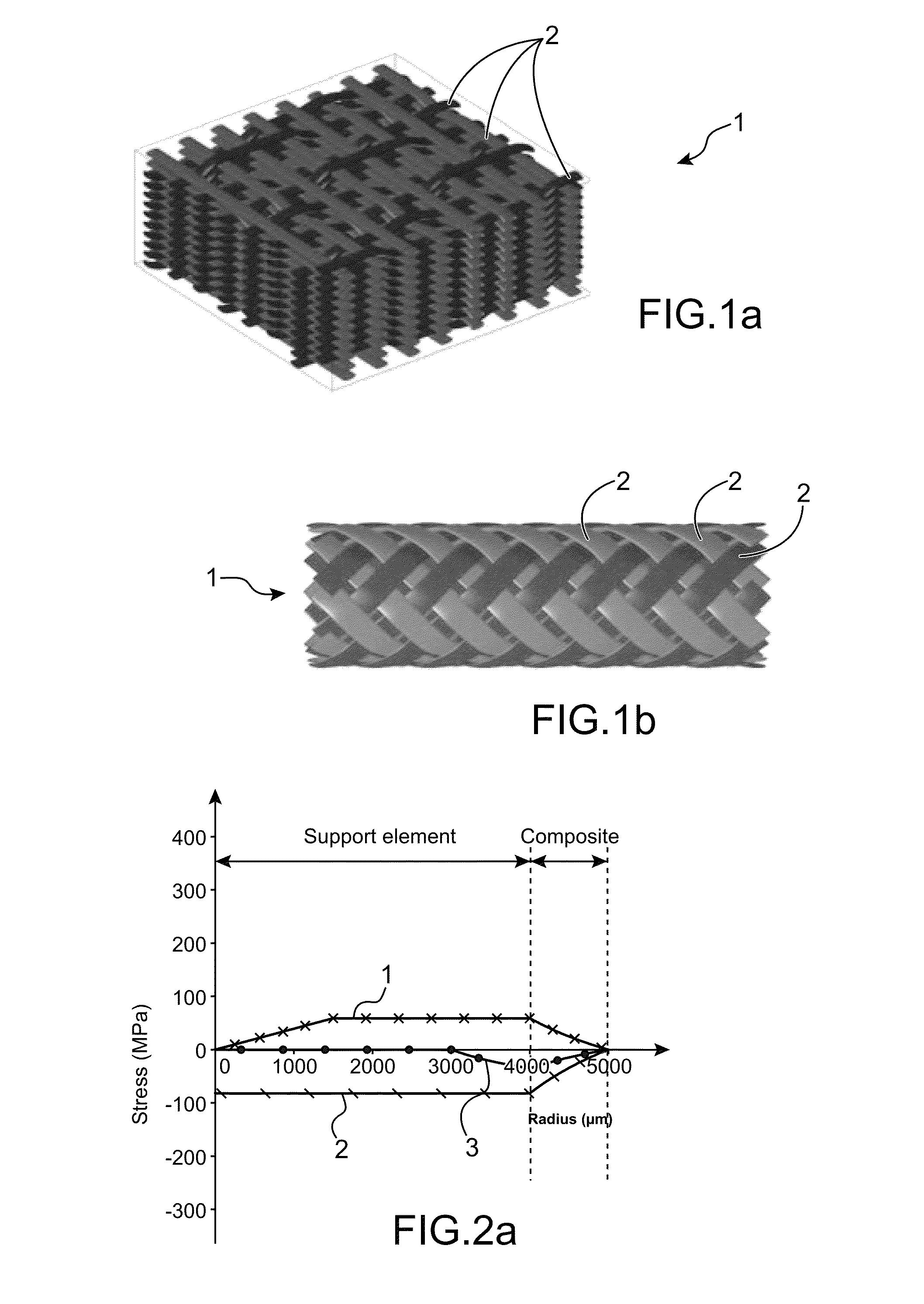Method for producing a composite including a ceramic matrix
a ceramic matrix and composite material technology, applied in the direction of instruments, surveying and navigation, reactor fuel elements, etc., can solve the problems of low rigidity, difficult to use to form parts of long lengths but of small diameters such as tubes, and difficult to respect the dimensions and tolerances of parts over long lengths
- Summary
- Abstract
- Description
- Claims
- Application Information
AI Technical Summary
Benefits of technology
Problems solved by technology
Method used
Image
Examples
Embodiment Construction
[0028]This aim is attained thanks to a method for producing a part made of ceramic material matrix and ceramic material fibres composite material, the method comprising the following successive steps:[0029]formation of a fibrous preform by intertwining threads constituted of ceramic material fibres on a contact surface of a support element reproducing the internal and / or external shape of the part to be produced;[0030]partial densification of the fibrous preform at a temperature below the melting temperature of the material of the support element and below the melting temperature of the material of the fibres of the preform, said partial densification resulting in a consolidated fibrous preform comprising a matrix volume fraction above 5% and at the most equal to 40% of the matrix volume of the part to be produced;[0031]removal of the support element from the consolidated fibrous preform by chemical attack of the contact surface of the material of the support element;[0032]densifica...
PUM
| Property | Measurement | Unit |
|---|---|---|
| volume fraction | aaaaa | aaaaa |
| volume fraction | aaaaa | aaaaa |
| volume fraction | aaaaa | aaaaa |
Abstract
Description
Claims
Application Information
 Login to View More
Login to View More - R&D
- Intellectual Property
- Life Sciences
- Materials
- Tech Scout
- Unparalleled Data Quality
- Higher Quality Content
- 60% Fewer Hallucinations
Browse by: Latest US Patents, China's latest patents, Technical Efficacy Thesaurus, Application Domain, Technology Topic, Popular Technical Reports.
© 2025 PatSnap. All rights reserved.Legal|Privacy policy|Modern Slavery Act Transparency Statement|Sitemap|About US| Contact US: help@patsnap.com



